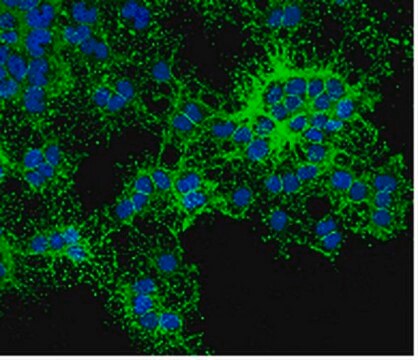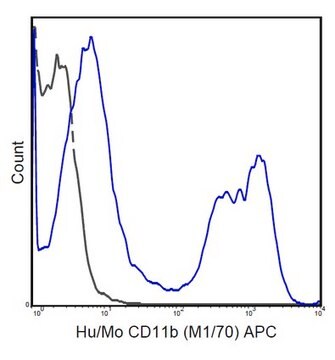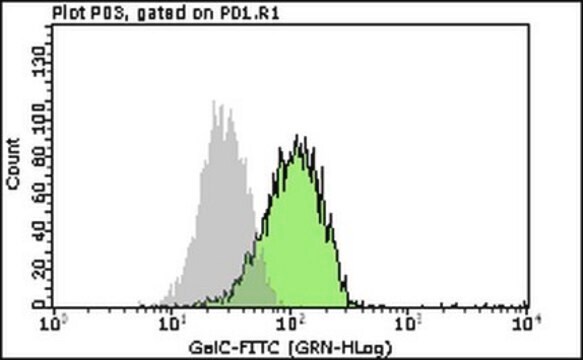07-1512
Anti-phospho-WAVE2 (Ser343) Antibody
from rabbit, purified by affinity chromatography
Sinónimos:
SCAR2, WASF2, dJ393P12.2, WASP family protein member 2, Protein WAVE-2, Verprolin homology domain-containing protein 2
About This Item
Productos recomendados
origen biológico
rabbit
Nivel de calidad
forma del anticuerpo
affinity isolated antibody
tipo de anticuerpo
primary antibodies
clon
polyclonal
purificado por
affinity chromatography
reactividad de especies
human, monkey
técnicas
western blot: suitable
Nº de acceso NCBI
Nº de acceso UniProt
Condiciones de envío
wet ice
modificación del objetivo postraduccional
phosphorylation (pSer343)
Información sobre el gen
human ... WASF2(10163)
Descripción general
Especificidad
Inmunógeno
Aplicación
Cell Structure
Cytoskeletal Signaling
Calidad
Western Blot Analysis: A 1:500 dilution of this antibody detected phospho-WAVE2 (Ser343) in 10 µg of COS-7+EGF cell lysates untreated and lambda phosphatase treated.
Descripción de destino
An uncharacterized band appears at ~103 kDa in some lysates.
Forma física
Almacenamiento y estabilidad
Nota de análisis
COS-7+EGF cell lysates untreated and lambda phosphatase treated.
Cláusula de descargo de responsabilidad
¿No encuentra el producto adecuado?
Pruebe nuestro Herramienta de selección de productos.
Código de clase de almacenamiento
12 - Non Combustible Liquids
Clase de riesgo para el agua (WGK)
WGK 1
Punto de inflamabilidad (°F)
Not applicable
Punto de inflamabilidad (°C)
Not applicable
Certificados de análisis (COA)
Busque Certificados de análisis (COA) introduciendo el número de lote del producto. Los números de lote se encuentran en la etiqueta del producto después de las palabras «Lot» o «Batch»
¿Ya tiene este producto?
Encuentre la documentación para los productos que ha comprado recientemente en la Biblioteca de documentos.
Nuestro equipo de científicos tiene experiencia en todas las áreas de investigación: Ciencias de la vida, Ciencia de los materiales, Síntesis química, Cromatografía, Analítica y muchas otras.
Póngase en contacto con el Servicio técnico







